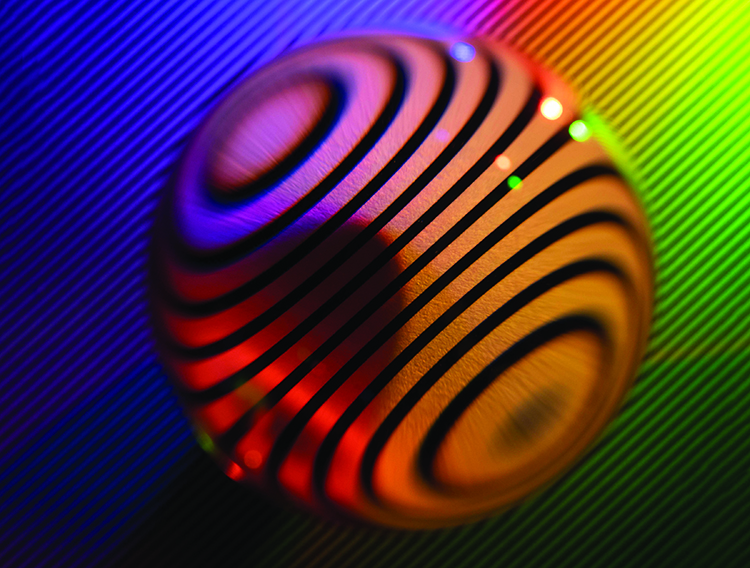
FIRST PLACE
A glass sphere is the geometrically simplest form of lens. In this photo, one can clearly see how the lens magnifies the lines in the background. The spherical aberrations toward the edges are visible, as well as another fascinating effect: the straight lines gradually become distorted into closed curves when looking toward the edges perpendicular to the lines in the background.
—Susanne Viezens, Max Planck Institute for the Science of Light, Erlangen, Germany
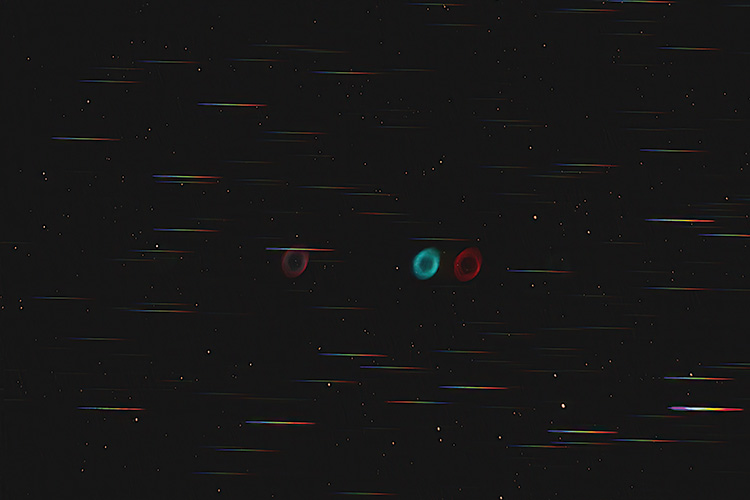
SECOND PLACE
Picture of the Ring Nebula (M57) taken with a Canon T2i DSLR and an RSpec Star Analyser 100 diffraction grating on a 10-inch Ritchey-Chretien telescope at f/9. The diffraction grating generated the spectra seen in the image. Well to the right of each star is the star’s spectrum. The Ring Nebula is the ring-shaped object just to the left of center in the image. Its spectrum also appears to its right. Interestingly, its spectrum appears to consist of only two wavelengths, a red one and a cyan one. The red one is H-alpha (656 nm). The cyan-colored one is O-III (501 nm). We don’t see a broad spectrum because the Ring Nebula, like most nebulae in the Milky Way galaxy, is an emission nebula. The picture is a stack of 60 one-minute unguided exposures.
—Robert Vanderbei, Princeton University, Belle Mead, NJ, USA
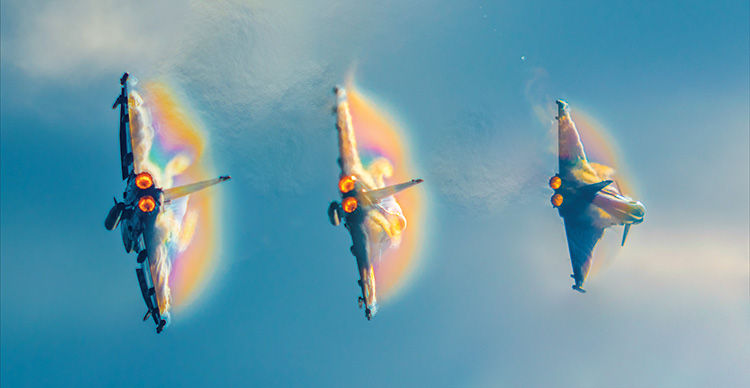
THIRD PLACE TIE
The Eurofighter Typhoon “Blackjack” performs at the Ayr International Airshow, UK. At transonic speeds, the local pressure behind the wings drops considerably and the surrounding air is sucked in and supercooled to form a vapor cone of liquid water and ice crystals. When the cone is viewed from a specific angle, the sun is refracted into its constituent wavelengths, resulting in a spectacular rainbow cone that lasts a split second.
—Kevin Mitchell, University of Glasgow, UK
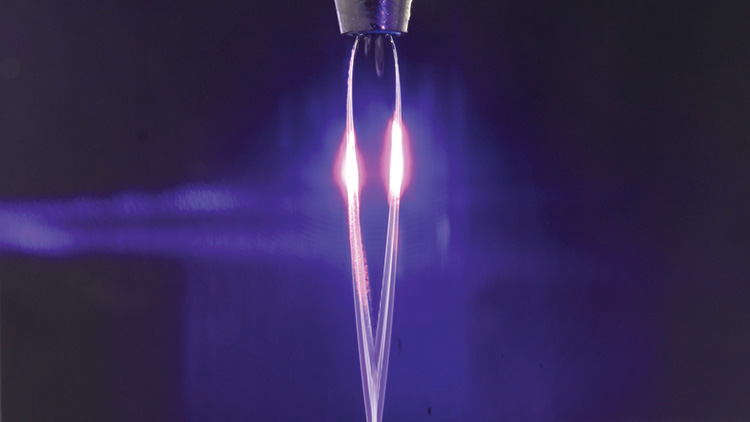
THIRD PLACE TIE
This image captures the intersection of engineering, physics and chemistry in the realm of optical-pump THz-probe spectroscopy. A blue laser momentarily renders the liquid jet impervious to THz radiation, creating the surreal image submitted here as well as the fastest triggerable electrical switch known to date (APL Photon., doi: 10.1063/5.0130236).
—Adrian Buchmann, Ruhr University Bochum, Germany
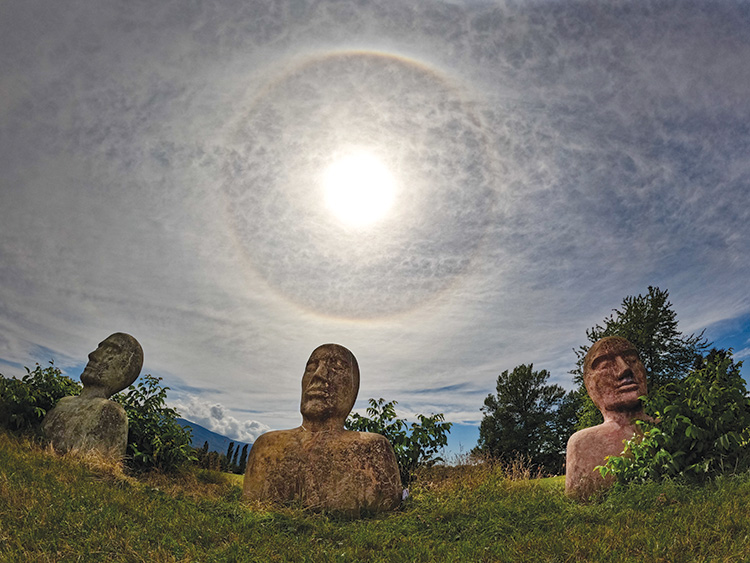
HONORABLE MENTION
Image of halo phenomena taken in Maribor, Slovenia. The halo is brightest above and below the sun’s disk. In those parts of the sky, the circumscribed and 22° halo overlap. Solar elevation was ~48°.
—Borislav Simonović, Serbia
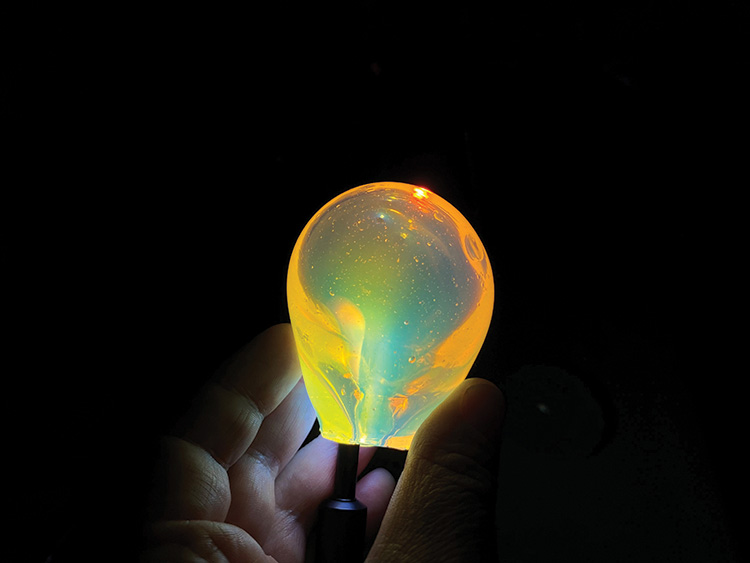
HONORABLE MENTION
White light from a halogen light source is scattered inside a bulb-shaped piece of glass. Due to a phase separation within the glass, Tyndall scattering of the light between the different phase regions leads to a striking effect.
—Azim-Onur Yazici, Max Planck Institute for the Science of Light, Erlangen, Germany
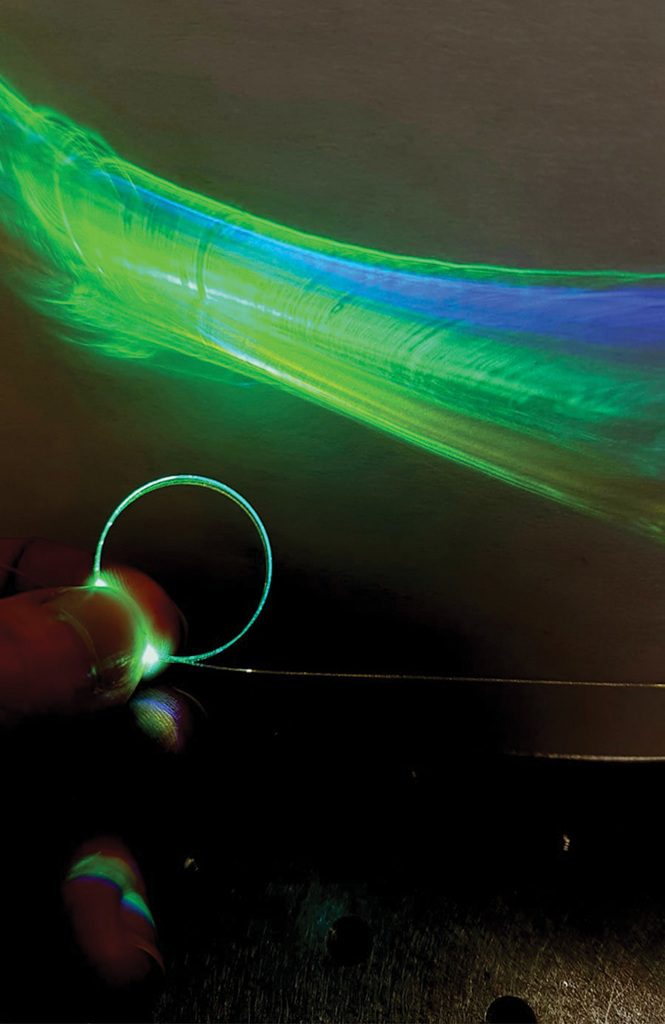
HONORABLE MENTION
Image captured by coupling light from a supercontinuum source into a 3-m length of anti-resonant hollow-core fibers (ARFs) and then bending a section of the ARF into a tight bend diameter. The bend corresponds to a critical bend diameter for blue, green and yellow wavelengths, causing the transverse loss of these wavelengths from the fiber. ARF fabricated by Leah Murphy and Stephanos Yerolatsitis at the University of Bath’s fiber fabrication facility. A white piece of paper was placed behind the fiber to capture the transverse loss of light.
—Leah Murphy, University of Bath, UK
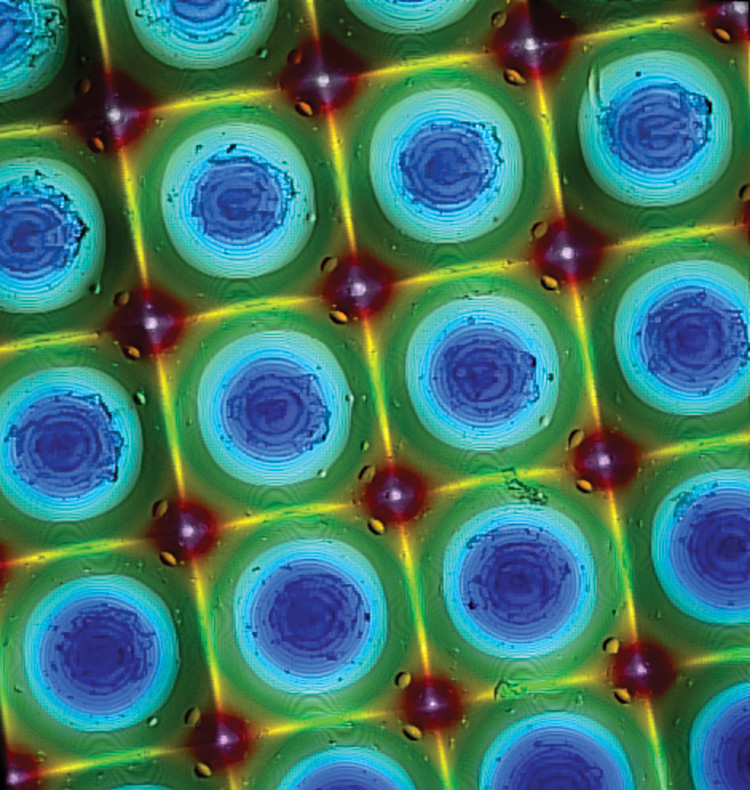
HONORABLE MENTION
A deconvolved color-coded projection of microlenses used in thin-film-transitor monitors. The image was formed from 78 confocal photos captured with a 50×/0.95 objective and a 405 nm laser. Each lens has a diameter of 60 μm.
—José Manuel Martínez López, Química Tech, Cd. Juárez Chihuahua, México

EDITORS' CHOICE
A row of consecutive dichroic filters is obliquely illuminated by a circular white torchlight, creating a diverse range of colors. A Huawei P30 smartphone camera in macro mode was positioned at the rectangular entrance (3 × 10 mm) with a strong tilt, providing a unique perspective.
—Aliaksei Kobylinskiy and Robert Brunner, Ernst-Abbe-Hochschule Jena, Jena, Germany
For this year’s contest, OPN received 53 remarkable entries. We thank the panel of judges who provided insight on those images and helped select the winners: Felipe Beltrán-Mejía, Alvaro Casas Bedoya, Mihaela Dinu, Anca Sala and Joel Villatoro.
You can see all of this year’s contest entries online at optica-opn.org/contest/2023.
